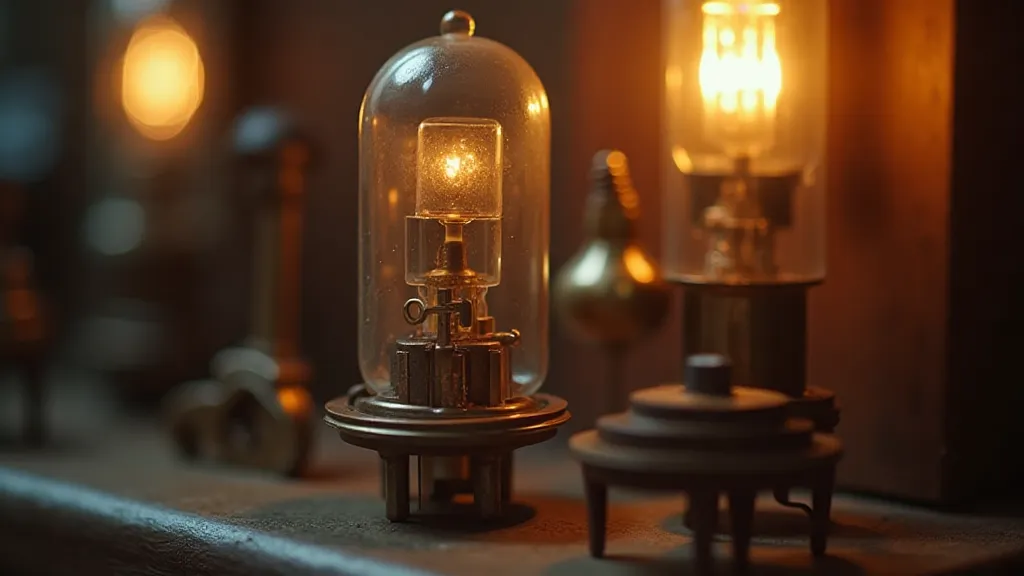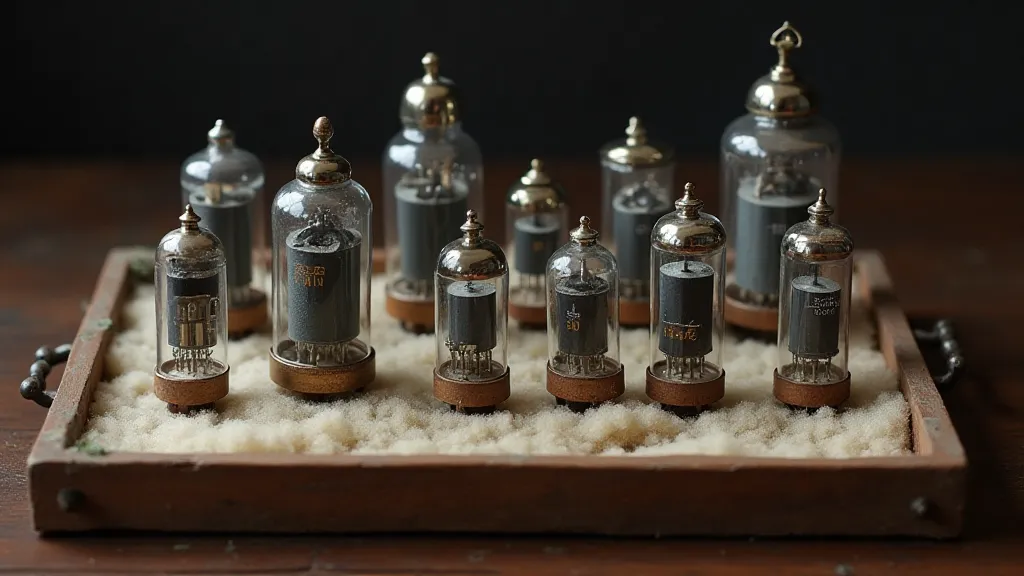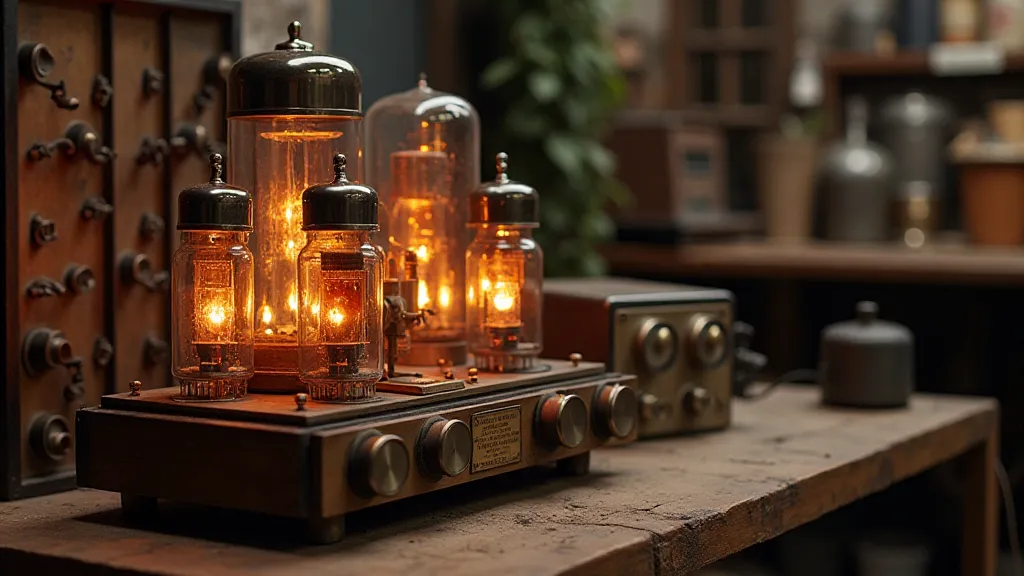The Filament’s Lullaby: Tracing Radio’s Evolution Through Tube Profiles
There’s a particular scent associated with antique radios: a blend of warm dust, aged cardboard, and something else… something deeper. That "something else" is often the lingering aroma of heated filaments, a ghostly echo of the vacuum tubes that once pulsed with life within these machines. These tubes aren't merely components; they are tangible artifacts, whispering stories of a rapidly changing world. Looking at a collection of vintage radio tubes isn’t just examining electronics; it’s peering into a reflection of societal ambitions, wartime urgency, and the relentless pursuit of a clearer signal.
My first encounter with these glass sentinels was as a boy, helping my grandfather restore a 1938 Philco. The radio, a mahogany monolith, had sat silent for decades. He’s the one who instilled in me a respect for the craft – the meticulous cleaning, the patient soldering, and the quiet reverence for the technology itself. He’s the one who taught me to understand that a vintage radio isn't just a machine; it’s a time capsule, a portal to a past where radio broadcasts held a near-sacred place in the family’s daily ritual.
The Early Days: Triodes and the Dawn of Broadcasting
The story of the vacuum tube is intertwined with the birth of radio itself. Before the triode, conceived by Lee De Forest in 1906, amplification of radio signals was a monumental challenge. Early transmitters used spark-gap technology, producing weak, erratic signals that struggled to cross distances. De Forest's invention, while initially flawed and controversial, provided the crucial ingredient: amplification. The early triode’s bulky, fragile glass envelope housed a filament, a grid, and a plate, each carefully positioned to manipulate the flow of electrons. These initial tubes were prone to failure, a constant source of frustration for early adopters, but they represented a giant leap forward.

The impact was immediate. Suddenly, radio broadcasts could reach farther, clearer. The first commercial radio stations began to emerge, broadcasting news, music, and entertainment into homes across the nation. These weren’t just technological advances; they were social revolutions, connecting people in ways previously unimaginable.
The Tetrode and Pentode Era: Efficiency and Fidelity
The triode, while revolutionary, suffered from inefficiencies. The introduction of the tetrode in the 1920s, and the pentode shortly after, addressed these shortcomings. Tetrodes added a screen grid, while pentodes added a suppressor grid, both designed to improve amplification and reduce distortion. These modifications brought increased power output and improved fidelity to radio receivers and transmitters.
The appearance of the tubes themselves started to reflect these innovations. Manufacturers experimented with different glass shapes, base types, and getter materials (the metallic patches inside the tube used to absorb residual gases). The Art Deco aesthetic of the 1930s heavily influenced tube design, resulting in elegant, streamlined forms that mirrored the broader design trends of the era. Collectors now cherish these early tetrodes and pentodes not only for their technical significance but also for their beautiful, sculptural forms.
Wartime Urgency and the Rise of Specialized Tubes
World War II brought an unprecedented demand for radio technology, spurring rapid advancements in tube design. Military applications required smaller, more rugged, and more efficient tubes. Manufacturers responded by developing miniature tubes, often utilizing robust glass constructions and getter techniques to ensure reliability under challenging conditions. The war effort also fostered a sense of innovation and collaboration, accelerating the pace of technological change.
These wartime tubes often bear the hallmarks of their era: markings indicating military specifications, simplified designs focused on functionality, and a sense of utilitarian elegance. They represent a stark contrast to the more decorative tubes of the pre-war period, reflecting the priorities of a nation at war.

The Transistor’s Shadow and the Tube’s Enduring Legacy
The invention of the transistor in 1947 marked the beginning of the tube’s decline. Solid-state electronics offered smaller size, lower power consumption, and increased reliability. By the 1960s, transistors had largely replaced tubes in most consumer electronics. The final curtain appeared to have fallen.
However, the vacuum tube didn’t disappear entirely. High-power applications, such as broadcast transmitters and microwave ovens, continued to rely on tubes for many years. And, crucially, a dedicated community of audiophiles recognized the unique sonic qualities of tubes – their characteristic warmth, harmonic richness, and perceived "musicality."
Today, there's a resurgence of interest in vintage radio restoration and tube-based audio equipment. Collectors and hobbyists meticulously preserve and restore these iconic machines, appreciating their craftsmanship and the stories they hold. The faint hum of a vacuum tube amplifier remains a tangible link to a bygone era, a testament to the enduring power of analog technology.

Holding a vintage vacuum tube in your hand isn’t just touching a piece of technology; it’s touching a piece of history. It’s feeling the echoes of innovation, resilience, and a shared human desire to connect through the airwaves. The filament’s lullaby is a timeless song, a reminder of a simpler time and the enduring magic of radio.





